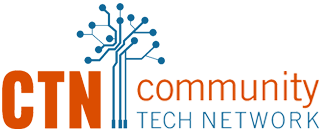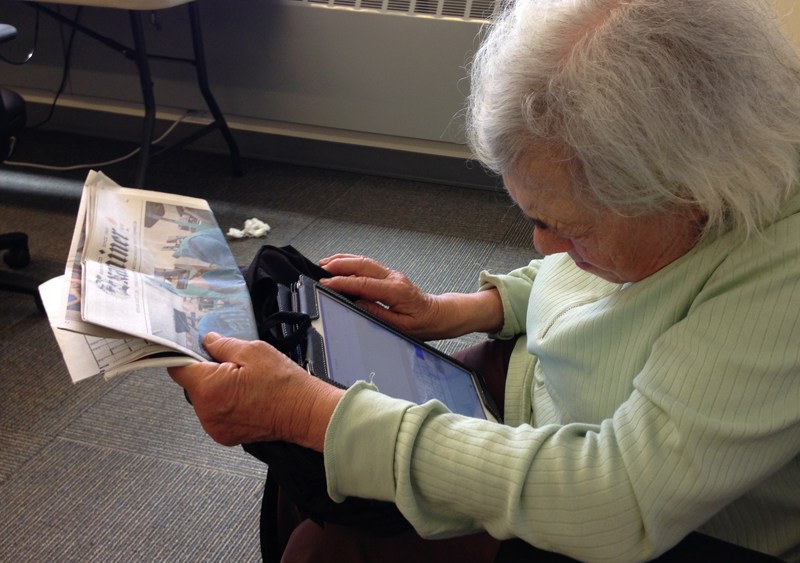You may know that Community Technology Network supports public-access computer labs all over the Bay Area, but did you know we are also committed to getting more people connected in their own homes? Read on and find out why and how.
The Cost of Digital Inclusion
At CTN we believe that everyone should be able to participate in digital society. But in California, affordability remains an issue. According to the California Emerging Technologies Fund’s latest annual survey, the groups that are falling below the statewide internet-at-home adoption rate of 84 percent are as follows:
- Households earning less than $22,000 (68 percent in-home access)
- Adults 65 or older (56 percent)
- Spanish-speaking Latinos (69 percent)
- Not a high school graduate (63 percent)
- Adults who identify as having a disability (71 percent)
The expense of buying not only a computer or smartphone but also an internet connection was cited as the reason for not having in-home access by nearly three-quarters of survey responders who were digitally excluded.
Hidden Costs of Digital Exclusion
Although the direct cost of paying for equipment and connection is high, the accumulated indirect economic and social costs of being offline are potentially far greater.
We know from our volunteers who help in the computer labs that people who are disconnected or “underconnected” are more isolated, at a disadvantage in the job market, and less informed about the range of services and support available.
Of course computer labs provide an invaluable resource for those who cannot afford the internet at home and who need one-one-one assistance, for example from CTN’s volunteers. The need for public-access spaces is unlikely to disappear any time soon, but we can help to eliminate the need for in-home access.
Online at Home
CTN participates in two important initiatives that are enabling people to connect at home.
First, is the Internet Essentials program from Comcast, which CTN has promoted since its inception in 2011. In 2015, CTN was made a partner in a multi-city pilot program to sign up more eligible beneficiaries, including seniors. The program has recently been extended through 2017 and now includes people who receive housing assistance. Beneficiaries not only get a super-low monthly rate for internet access, they are also offered a very inexpensive computer that’s preinstalled with Microsoft Office and Norton antivirus software. The Comcast portal also includes software tutorials. Nice!
CTN is also partnering with EveryoneOn.org, a national nonprofit working to eliminate the digital divide by making low-cost internet and computers and free digital literacy courses accessible to all unconnected Americans. Essentially, EveryoneOn is a very useful database of low-cost internet plans, affordable computer equipment providers, and skills training opportunities in your area. Simply type in your zip code on the homepage to find offers!
More Home Help
Of course, Comcast and EveryoneOn are not the only resources out there. Here is a list of other programs that are designed to help more people get connected in the comfort of their own homes.
- Access from AT&T: Available to households in which at least one resident is a recipient of the Supplemental Nutrition Assistance Program or Supplemental Security Income.
- PCs for People: Low-cost technology and internet access for people who are below the 200 percent poverty level or enrolled in an income-based government assistance program. Some nonprofits are also eligible.
- Basic-Internet.com: Provides low-cost internet access and computers to low-income families.
- California LifeLine: A state program that provides discounted home phone and cellphone services to eligible households.
Expanding Access Throughout California
Internet For All Now is a campaign of the California Emerging Technology Fund (CETF) and its partners. The campaign’s goal is to replenish the California Advanced Services Fund in order to get rural communities and poor communities connected to high-speed internet. Since 2007, CETF has provided leadership statewide to close the digital divide by accelerating the deployment and adoption of broadband to unserved and underserved communities and populations.


Comments are closed.